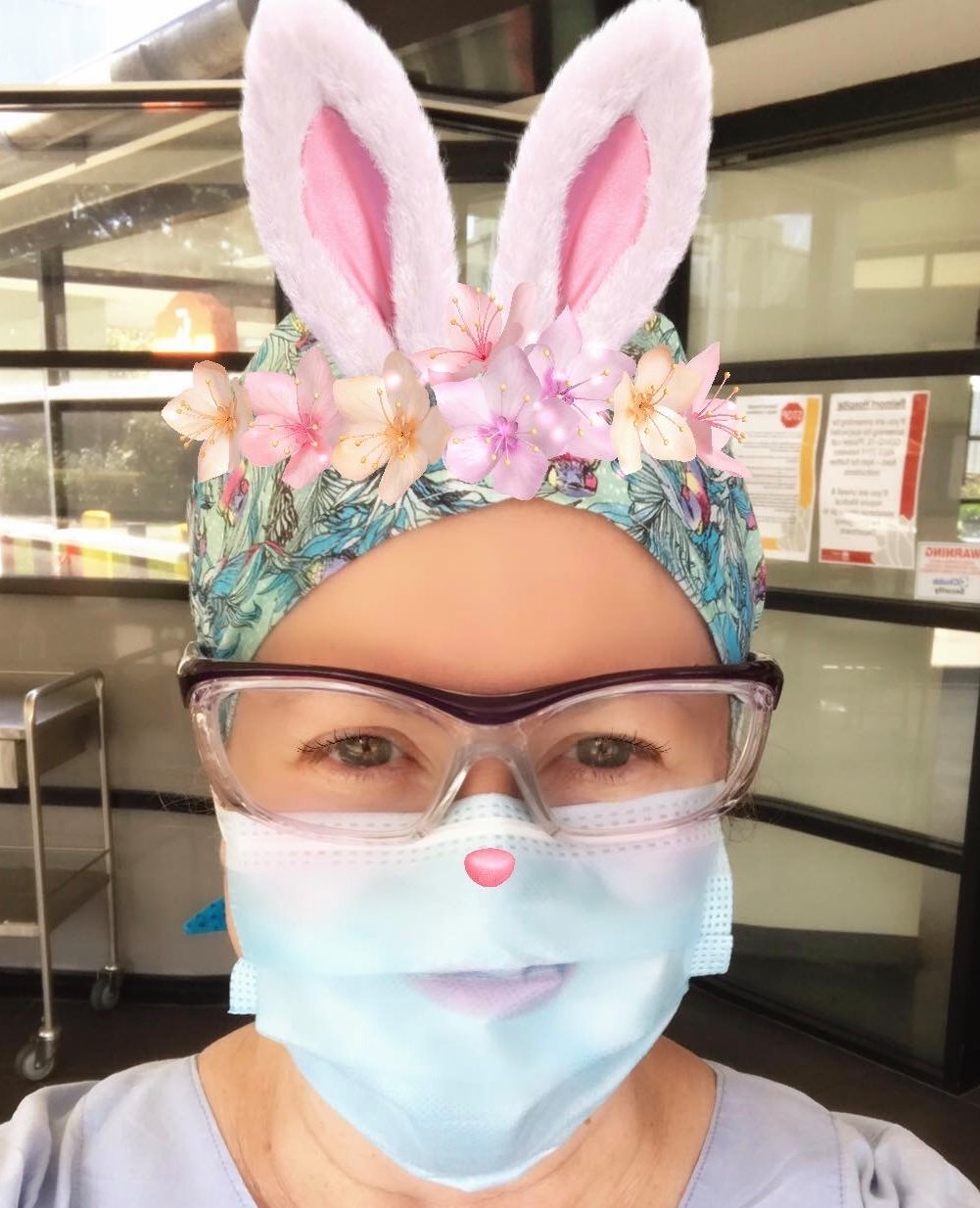Table of Contents
We are happy to introduce Clinical Facilitator & Emergency Clinical Nurse Specialist (CNS) Marcia! She writes with a focus on finding your passion & sepsis in the below article! A passion of hers after she almost lost her father to it…
What do I want to be when I grow up?
My name is Marcia and I’m a Clinical Nurse Specialist in Lake Macquarie. I took a long way around to nursing, trying a few things before I realised that my career destination was inevitable. My Mum was a Psychiatric Nurse for 45 years. As I child I believe she held the answers to all of life’s questions and I wanted to be just like her when I grew up. Cut to January 1993 after the HSC and I briefly entertained the notion of becoming a nurse before choosing Community Welfare instead. However, in the year 2000, I took the plunge and started my Bachelor of Nursing.
For the most part, I enjoyed the study. But 3 years blew out to 6 as my husband and I welcomed our first 2 children. Within 6 weeks of each birth, I was back at work, exams and clinical placement. I worked out quickly where I didn’t want to work but still wasn’t quite sure of where I might end up. I was fortunate to undertake my New-Grad year in North Sydney Central Coast Health, with a rotation through 5 departments at Wyong hospital, finishing in the Emergency Department (ED).
This was it! The pace, the people, the opportunity to learn. I was terrified every day, but my adrenalin served to keep me on my toes and like a sponge, I absorbed everything I could. By mid-2008, I had grown tired of the lengthy trip to and from work. I dropped my resume in at Belmont Hospital, and while there were no vacancies in ED, I started work on the Short-Term Residential Accommodation Service (STRAS) and the Medical unit. Within a couple of months, I had landed in ED and quickly got to know the lay of the land. I got stuck into my Graduate Certificate in Critical Care before welcoming our third child.
Finding my passion
In 2010, to support my application for the Clinical Nurse Specialist (CNS) position, I was advised to select an interest or portfolio of work that I could champion within my department. My NUM suggested the monthly sepsis audit. What I knew of sepsis could be written on a postcard. I knew people with ‘blood poisoning’ had to fight to survive and sensed that the quicker we treated these very sick people, the better their outcome might be. At about the same time, sepsis made it personal.
My father was diagnosed with prostate cancer and following a routine prostate biopsy, became very ill. Here was a man at the mercy of an infection which could kill him. My dad placed his trust in the hands of the Emergency team, and because his sepsis was recognised early and responded to promptly, he was one of the lucky ones. The thought that a delay in the delivery of first dose antibiotics could have cost my Dad his life became a major motivator for me.
During this time the Clinical Excellence Commission (CEC), using Root Cause Analysis (RCA), had identified Sepsis as being a recurrent issue.
Delayed treatment of patients with severe infection and sepsis was found to be associated with high mortality rates and high costs to the healthcare system.
Engaging the team in the ‘why’ of the Adult Sepsis Pathway
As part of the Sepsis Kills program, I commenced auditing in the ED. The audits reflected wild variations in time to first dose antibiotics. Initial audits had our response time at 254 minutes! We recognised that more work needed to be done to increase awareness among clinicians.
To coincide with World Sepsis Day, September was renamed ‘Sepsis September’ and used as an opportunity to roll-out the CEC’s new Adult Sepsis Pathways. During this time, I presented case studies at Nursing Grand Rounds; spent time embedding practice around early recognition and response to sepsis through in-service education; and introduced the Sepsis Roadshow in collaboration with our Clinical Nurse Educator, Mel.
On completion of the audit for September, it was clear that targeted education had had some impact. Our time to first antibiotics was 93 minutes. However, what was also clear was that we needed more than just the sepsis audit. The investigation began looking at why the decision to administer antibiotics took so long. What was going on in the department that impacted the use of the Sepsis Pathway? Were the clinical staff aware of the pathway and guidelines? Were we empowering the RNs and JMOs with the knowledge and the confidence to approach the senior medical staff with their concerns? So many questions!
International recognition of our efforts
The audit results for Sepsis September 2015 reflected a downward trend. We had smashed the 60-minute benchmark and come in at an impressive 46 minutes! Wary of becoming complacent, Sepsis had now become a major focus at our National Safety and Quality Health Service Standard (NSQHS) committee meetings.
We knew we were on to something and now other people began to take notice. On Mother’s Day 2016, I opened an email from the Global Sepsis Alliance. I was stunned to tears. I had been awarded the Global Sepsis Award for Individuals for Major Contributions in the Fight Against Sepsis! To say this was a career highlight would be a gross understatement. In that same year, I was awarded the Ko Awatea International Award for Leading Sustained Quality Improvement, receiving recognition at the APAC forum in Sydney in October.
In November, with the support of my district, University of Newcastle, and team, I undertook a study tour of the UK to meet the teams at several hospitals in London, as well as the UK Sepsis Trust team. I then travelled to Paris to present a poster and receive my award at the International Sepsis Forum. The following year our team was recognised at the district Excellence Awards for our commitment to quality improvement.
It’s all about patient safety!
My experience leading quality improvement projects with sepsis has contributed to my passion for patient safety. In 2018, I commenced studying a Graduate Certificate in Patient Safety and Clinical Risk Management. Last year I began my Master of Nursing – Clinical Leadership and undertook a secondment to Clinical Governance as Patient Safety Officer. My advice for beginning practitioners would be to:
- Find a passion and work hard to raise awareness by engaging other clinicians. Your passion will have the flow-on effect of improving the quality and safety of the nursing care you provide for your patients.
- Find a mentor. I have been fortunate to have several managers in ED and Clinical Governance, as well as a Professional Supervisor, who have encouraged, guided and supported me in working towards my goals.
- Recognise and reward your colleagues when they come aboard. Change can be hard and we all like to know we’re doing a fantastic job.
- Don’t quit when you hit a roadblock! Look at the roadblock as a challenge. Bounce ideas off your colleagues and brainstorm a fresh approach.
- Never stop spreading the word. To increase community awareness, I developed the Lake Macquarie Sepsis Support FaceBook page. Here, I try and provide current information on guidelines and research into sepsis from around the world, as well as a private support group for survivors of sepsis.
Five years on from the initial Sepsis project, I am pleased to say we are sustaining the positive changes we have implemented in ED over the last 8 years. Day-in and day-out our Sepsis Superstars work hard to recognise, resuscitate and refer, saving the lives of our patients.
So, why do we need to worry about sepsis?
Annually in Australia, there are over 18000 people diagnosed with sepsis, 15700 Sepsis cases in ICU, with more than 3000 deaths. Globally, sepsis accounts for 5 times more deaths than myocardial infarction, with a person dying from sepsis every 3.5 seconds. This means over 11 million people die each year from sepsis. Anyone can develop sepsis, but those most at risk include the elderly, very young, pregnant or immunocompromised.
What is sepsis?
Sepsis is a life-threatening organ dysfunction due to a dysregulated host response to infection. What this means, is that sepsis is a life-threatening condition that arises when the body’s response to an infection injures its tissues and organs.
Stage 1: A local infection overcomes the body’s local defence mechanisms, and pathogenic germs and the toxins they produce leave the original site of the infection and enter the circulatory system. This leads to a general inflammatory response called SIRS (systemic inflammatory response syndrome).
Stage 2: The function of individual organs starts to deteriorate and may completely fail.
Stage 3: Several organs stop functioning sequentially or simultaneously, and cardio-circulatory failure leads to a sudden drop in blood pressure. The patient is now in septic shock.
How do we manage sepsis?
- Recognise and flag sepsis risk factors, signs and symptoms. Use the Adult Sepsis Pathway and the Between the Flags guidelines to detect deterioration. Conduct a septic screen ensuring you collect at least 2 sets of blood cultures and measure the lactate.
- Resuscitate using appropriate fluid resuscitation as per guidelines and ensure prompt administration of antibiotics – first intravenous antibiotic administered within one hour of recognition
- Refer to the appropriate clinical team and increase the frequency of observations
Important Resources
- SEPSIS KILLS – http://cec.health.nsw.gov.au/keep-patients-safe/Sepsis
- The Australian Sepsis Network – https://www.australiansepsisnetwork.net.au/
- Global Sepsis Alliance – https://www.global-sepsis-alliance.org/
- Sepsis Alliance – https://www.sepsis.org/
- The UK Sepsis Trust – https://sepsistrust.org/
You can check out the TNB Sepsis poster here







You must be logged in to post a comment.